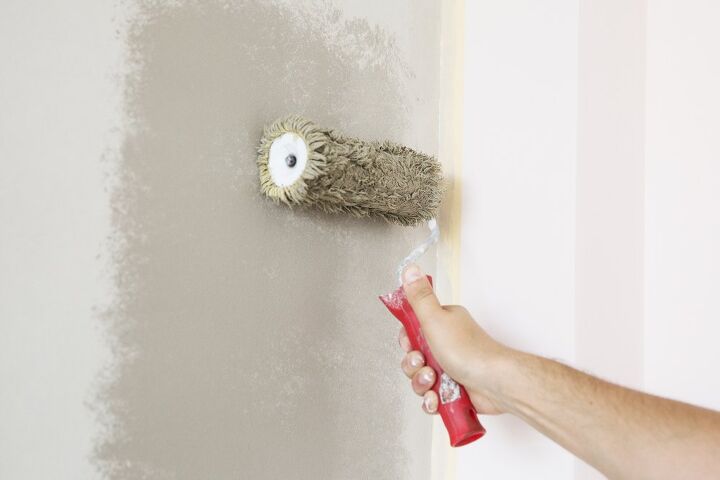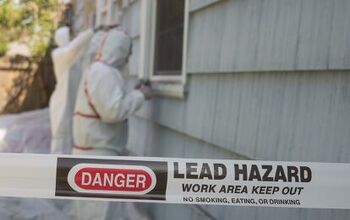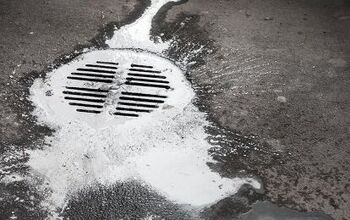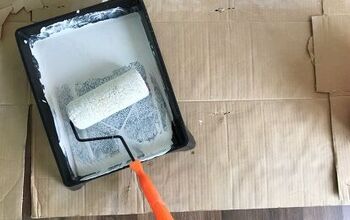What Is Pastel Base Paint? (Find Out Now!)

Painting can be challenging, especially when using dark colors or covering uneven surfaces. But a good pastel base paint can help you finish projects without the stress. So, do you need a base for every job? And how are base colors different from primer?
Pastel base paint features more white than any other color. That means you can’t add many other pigments to the can. It also means you get a solid basecoat for your top lacquer layer. So, most professional painters suggest using a pastel base when covering objects with light colors.
Do You Need to Hire a Paint Contractor?
Get free, zero-commitment quotes from pro contractors near you.

What Is Base Paint?
The base is the foundation of all other colors added to a paint can. It is essentially the undertone of your color. Meanwhile, the base number on each can refer to the different foundational colors. And the number also dictates which colors you can use when mixing new shades.
What’s the Difference Between Base Paints?
You can form the foundation of a specific color using tintable base paint. However, there’s a science to mixing colors. And each label is different, so pay attention. But here are some base paint basics to get you started:
- Clear: This option is best for painting with dark colors such as blue, brown, or black.
- White: Use a white base paint when coloring surfaces with lighter shades.
- Pastel: Soft pastel base is great for painting with bright colors such as red, pink, or yellow.
- Grey: This option works best under earthy paint colors and jewel tones.
- Black: Use a black paint base when coloring surfaces with dark lacquer.
TIP: Look for neutral base colors if these options don’t work.
What Is Pastel Base Paint Used For?
You can use pastel base paint for many things, including interior and exterior projects. Plus, the best one will give you a more authentic color because it coordinates with the shade underneath. Then, you can put that color on your walls or woodwork for an excellent finish. And high-quality semi-gloss or glossy lacquer offers easy maintenance as well.
Pastel base paints are perfect for when you’re using light colors. They help bright shades shine through, even on dark surfaces. So, using a pastel color for your base is essential. And high-quality paint products can make your brushstrokes even prettier.
Is Base Paint the Same as Primer?
There’s a significant difference between base paint and primer. For one, primer consists of resins that seal holes or cracks and prevent unevenness. You can also use a primer to help lacquer bond to the surface. Most paint jobs call for at least one primer layer for optimal results.
Base paint, on the other hand, consists of resin pigments. So, you can mix different colors to create a custom blend. However, you’re not supposed to use a paint base as a primer because it won’t work. You can’t cover rough surfaces with base paint alone. After all, the base is merely the foundational fluid for color.
TIP: Create a color using the best base paint, and then find a brand that features primer in the formula.
Which Is Better: Primer or Base Paint?
Primers and base paints are different. So, neither one is better than the other. And that means you should try to use a good primer before covering new surfaces or woodwork. Then, choose a base color that enhances the shade you picked.
NOTE: It doesn’t matter what you use. Your project might not turn out right if you don’t sand the surface first.
Are Base Paint and Top Coat the Same?
- Primer: Smooth the surface and help your paint adhere to it.
- Base Paint: Create the correct undertones for your perfect color.
- Top Coat: Protect your work from moisture and damage.
Some manufacturers offer pastel base paint with primer and topcoat included. But you can’t tell unless you read the label. And while base coats are thick and sticky, topcoats are thin and slick. A combination of all three layers provides strength and durability to any surface.
Will Base Paint Change the Color of My Walls?
Your base paint can change how your paint looks on the wall. That’s because the undertone blends with the color to create a unique shade. And that’s also why homeowners pick base colors carefully. If you choose the wrong one, your walls won’t look as good as they could.
Try to use a base that coordinates with your primary lacquer. For example, use pastel base paint to color walls with deep or rich hues. In most cases, the best paint colors for pastel base paint are red, pink, and yellow.
Solid Paint, Pastel Base
Start with a pastel base to finish painting projects like a pro. But don’t assume that you can skip the primer. Use multiple layers to protect your surfaces and prolong the life of your work. Then, try to coordinate the color of your paint with the base for best results.
Do You Need to Hire a Paint Contractor?
Get free, zero-commitment quotes from pro contractors near you.

Related Questions
Can You Base Paint Without Tinting?
It’s okay to use base paint without tint because it will eventually dry, leaving a ready surface for your color. However, tinting the base helps guarantee you get the shade you want. Even if you’re painting with white, untinted base paint can cause underlying colors to bleed through.
What Is Eggshell Pastel Base?
Eggshell pastel base is a combination product that provides excellent coverage while offering a semi-gloss finish. However, there are pros and cons to using it for walls. Some manufacturers make their base products with mildew-resistant properties and topcoats. But you can find low-odor and anti-microbial options as well.
Which Goes First: Primer or Basecoat?
Always apply a coat of primer before painting. And then lay down your base coat after the primer dries. That way, you create a smooth surface for the base. Then the base makes it easier for your paint to adhere. But you still have to paint the surface. So, both elements are essential to the finished product.
How Do I Choose Paint Base?
Choose your paint base carefully. It should enhance the undertones and hues of your favorite color. So, buy white or pastel base paint for light to medium colors. But switch to medium or dark bases when covering richer shades. And don’t forget that each layer has to dry before you apply more, or else you can’t fairly judge the efficacy.
Related Guides
What Is High Hide White Paint?
Can You Paint Over Sealed Concrete?
My Painter Did a Bad Job! (Here’s What You Can Do)

Tiffany Nichols specializes in aesthetics, design, marketing, and manufacturing. She's a copywriter and editor for several home renovation companies in the U.S. and works alongside some of the biggest names in the industry. Her hobbies include architecture, art, mental health, and fashion.
More by Tiffany Nichols



























